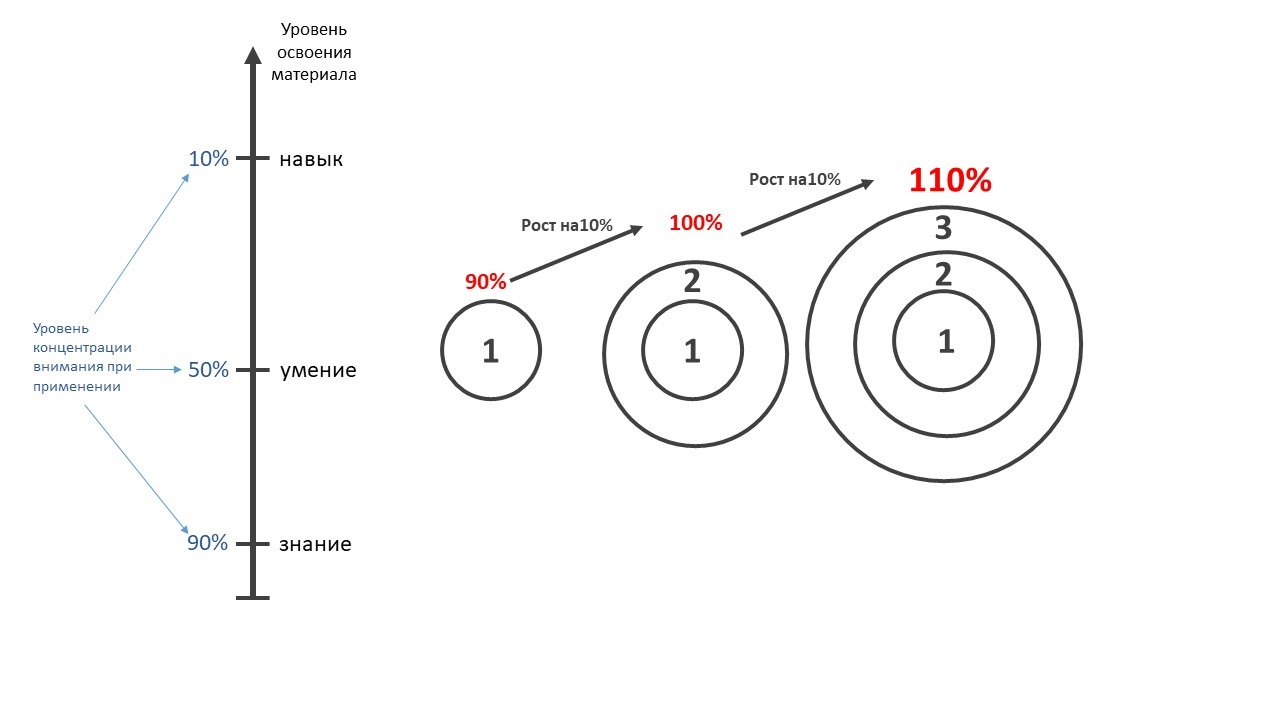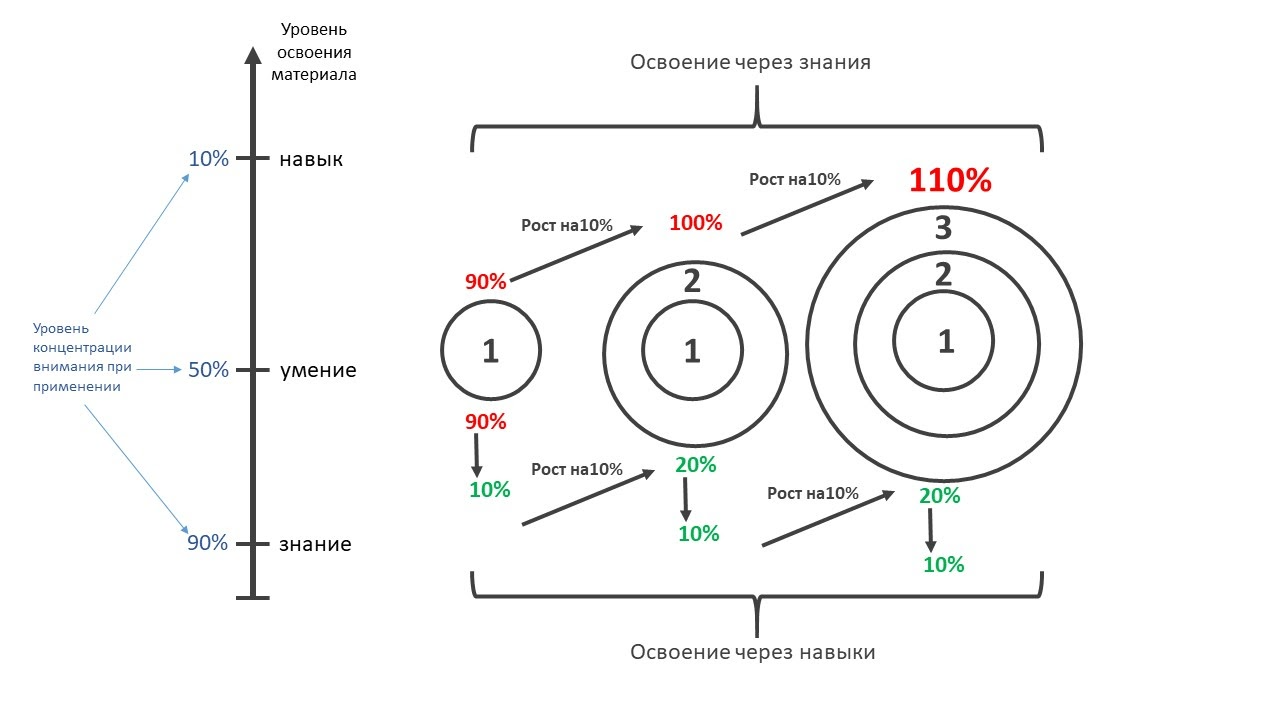Disclaimer
In this article, I will consider only one parameter that affects the mastery of something - attention. Of course there are others, but that is a matter of other articles. I ask you to take this into account in criticism and comments.
The key parameter in all my calculations is the level of concentration of attention when applied. The numbers are relative. Trends can be traced in any empirical assessment. I took the high ones for the convenience of demonstrating the principles.
There are three levels of development:
Knowledge. When we learned something, they explained it to us. Little practice. The level of concentration is the highest when applied. Let's take it as 90%. Of course there is variation, depending on the material that you master. In my examples, I proceeded from the assumption that the student (or the teacher) will want to use their capabilities to the maximum.
Skill. It was explained to us and we practiced for a long time. There is a serious experience. But you still need to control the application process. Attention level is 50%.
Skill. We found out or explained something to us. The amount of practice is very large. We practically do not concentrate when applying. Attention level is 10%.

It is quite obvious that the more deliberate practice, the less you need to concentrate when applying.
3 . - .
:
( ). . . .
. 10%.

“”
- , - , . - . , , - . - .
. (, ). .
, , .
№3 - 110% . 110%. - . . .
. “” .
, , (). , , - . - , “”. - ?
“”.
, . . , . . .
“”
- , (, ) , “”. - .
. , . , ( ) . - .
, .
, ( 1) . . . , :
- 20% . .. . 110% .
10%. . , .

. , , . , . .
, . . . .
- ! . Simple Continuous , , . .
, . - .
“”.
. , . 10 , - . ! .
:

1997 , . , . , , . 2 3 . .
1,5 :
. - , - .
- . .
- 10 (5+ ) 9 (5 ) . .
:
, .
. .
- . , - . .. 20 . , . , . 20 .
, 20 , - . 20 4-5 , . !
?
( ) .